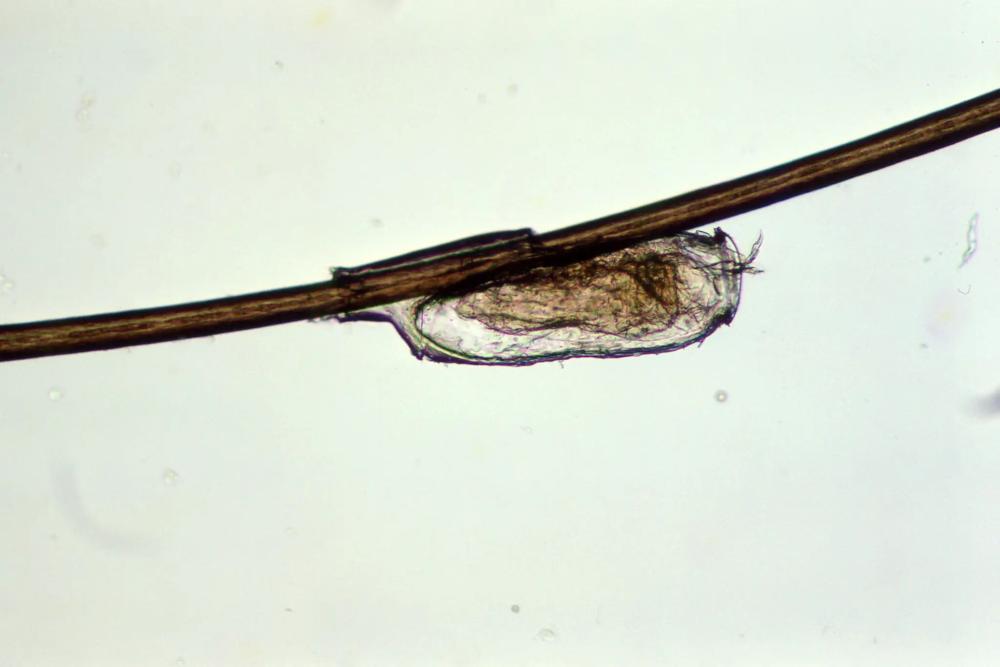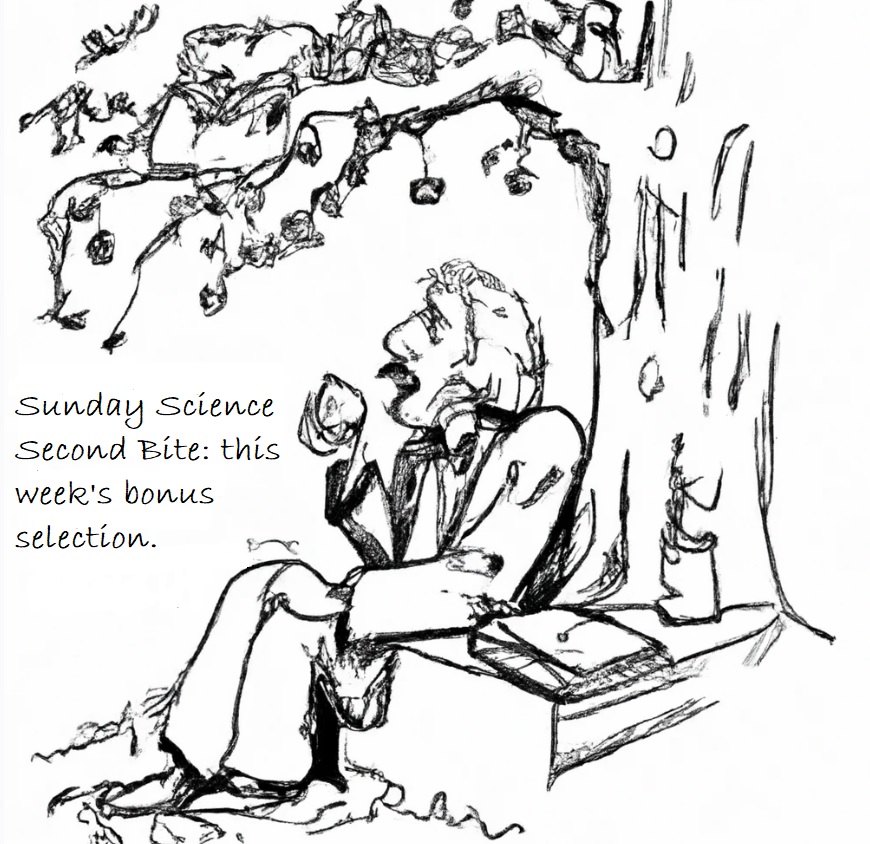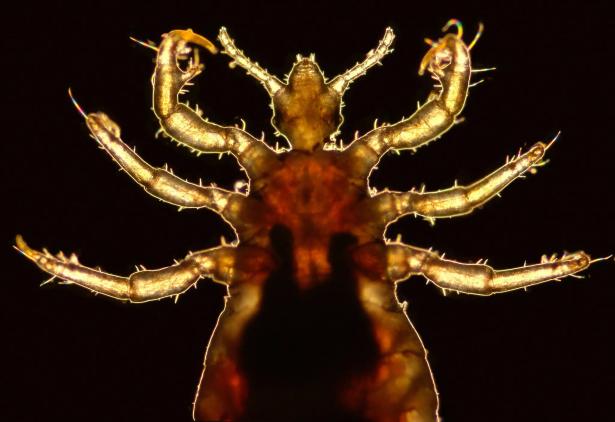Along our evolutionary journey from monkey-like primates to bipedal apes to big-brained humans, we have had the company of an extraordinarily loyal companion: Pediculus humanus, otherwise known as the human louse.
And all the while, the lice have recorded this journey in their genes. A new study, for example, found that some lice in the Americas are hybrids of those carried there by Native Americans and others ferried across the Atlantic by European colonists.
“We humans do not live in a bubble,” said Marina Ascunce, an evolutionary geneticist at the U.S. Department of Agriculture and an author of the new study. “Lice are part of our lives and our history.”
Lice commonly dwell on people’s heads, clamping onto hair shafts, piercing scalps and drinking blood. Unable to survive away from human bodies, the parasites jump from one person to the next. If people are crammed together in unsanitary conditions — such as an overcrowded jail — lice can spread into clothes and feed on other body parts.
Other mammals and birds have lice of their own. Each species of the parasite has exquisite adaptations to its particular host, be it a penguin or a bat. This intimate association is ancient. In Germany, paleontologists discovered a 44-million-year-old louse with bits of feathers preserved in its gut.
Lice fossils are too rare to reveal very much about their history. But their DNA contains many additional clues. By analyzing genetic material from lice, entomologists can build their family trees, revealing which species are most closely related.
Often, the closest relative of a louse species lives on the closest relative of its host. For example, in the early 2000s, David Reed of the University of Florida and his colleagues found that human lice are most closely related to lice that live on chimpanzees and more distantly related to lice that live on monkeys. For some 25 million years, in other words, our lice have been following us down our evolutionary path.
That’s not to say that lice are completely loyal. Another species, Pthirus pubis (better known as crabs), dwells only in human pubic hair. Crabs are not closely related to head lice. Instead, Dr. Reed and his colleagues have found, their closest cousins are lice that live on gorillas. It’s possible that early human ancestors picked crabs up while sleeping in an old gorilla nest, or feeding on gorilla carcasses.

An unhatched egg of a head louse still attached to a human hair shaft. Credit Dennis Juranek. Centers for Disease Control and Prevention
In another provocative study, Dr. Reed and his colleagues compared human lice from different parts of the world. They looked at genetic material known as mitochondrial DNA, which is passed down only from females to their offspring. The researchers found that many lice belonged to one of two lineages. Remarkably, those lineages split from a female louse that lived perhaps a million years ago.
Dr. Reed and his colleagues speculated that this deep split came about when humans expanded out of Africa. Along with their own lice, they picked up lice from Neanderthals or some other extinct group of humans.
More recently, lice researchers have turned their attention to the chromosomal DNA that lice inherit from both their mothers and fathers.
In 2010, Dr. Ascunce joined Dr. Reed’s team and led an effort to collect such DNA from a broader sweep of the world.
In the new study, published on Wednesday in the journal PLOS ONE, Dr. Ascunce and her colleagues analyzed DNA from 274 lice collected from people in 25 places across the world, including Honduras, France, Rwanda and Mongolia.
The DNA revealed two geographic clusters of lice. One was present in Africa, Asia and the Americas. Among these lice, the researchers found a close genetic link between Honduras and Mongolia. They suspect this kinship is a sign that the Asian people who first spread into the Americas about 23,000 years ago brought lice with them.
The remaining lice formed a second cluster, which the researchers found in Europe, as well as in the United States, Mexico and Argentina. The researchers also found 33 hybrids of the two clusters, 25 of which lived in the Americas.
Dr. Ascunce and her colleagues see in these results a chronicle of modern history: European colonists sailed to the New World, bringing their lice with them. In the Americas, the second cluster spread and sometimes ended up on the heads of people already infected with lice from the first cluster.
But if these lice are indeed colonial hybrids, Dr. Ascunce and her colleagues are puzzled that they haven’t found more. The rareness of the hybrids might be the result of some kind of barrier to interbreeding. It’s possible that the two clusters of lice were isolated from each other for so long that they gained mutations that didn’t work well when they were mixed back together.
Dr. Ascunce said that lice researchers are only at the beginning of their work. In the new study, she and her colleagues looked at just 16 small regions of louse DNA. The next wave of research will examine the entire louse genome, and she expects this new data will yield more insights.
It may be possible, for example, to understand how human lice evolved the ability to move from the head to the body, and why only body lice carry microbes that can cause diseases such as typhus. And researchers may be able to pin down exactly how our ancestors picked up the lice that still bedevil us today.
“The genetic information we are seeing in current human lice can still tell us things about our human past,” said Dr. Ascunce.
Carl Zimmer covers news about science for The Times and writes the Origins column.
Subscribe to the New York Times.

Do Gravitational Waves Exhibit Wave-Particle Duality?
All matter particles can act as waves, and massless light waves show particle-like behavior. Can gravitational waves also be particle-like?
Ethan Siegel
Starts with a Bang
November 9, 2023


Spread the word